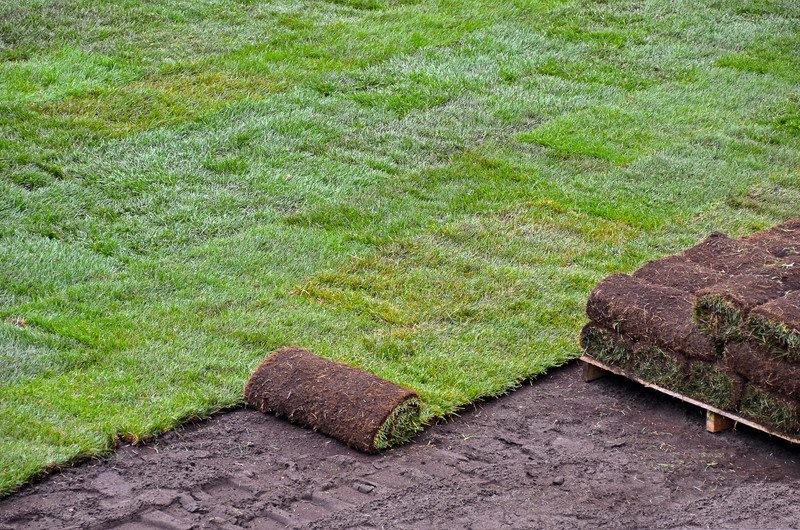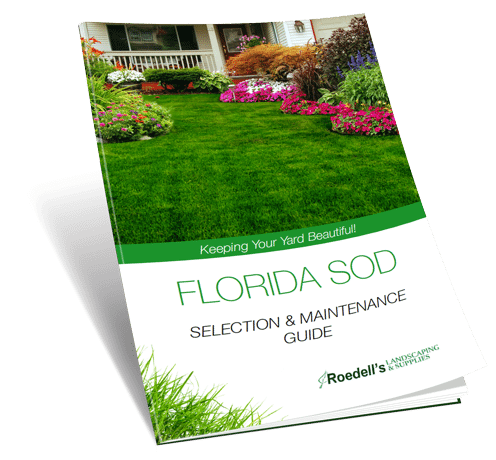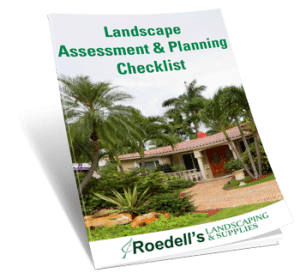We all want that gorgeous, thick green lawn. The easiest and fastest way to accomplish that in most cases is by installing sod. Sod is sections of cut from the surface of grass including the roots. Although sod may be the fastest and easiest way to get an instant lush lawn, it doesn’t come without some work and careful considerations that should be taken to mind.
Here in Central Florida, we are somewhat in a “transition” zone when it comes to plant hardiness. While we don’t have the consistent cold temperatures and freezes of North Florida, we do get frost and an occasional freeze. We aren’t far enough south to have the sub-tropical and tropical environments of South Florida. Regardless of the zone, the entire state of Florida has a warm enough climate that it is important to make sure you chose a warm-season sod grass to install. The best grasses to install in Florida include St. Augustine, the most popular, Bermuda, Centipede, Bahia and Zoysia. These grasses spread by runners above and below ground and hence are better suited for warmer climates. For reference, cool season grasses include Fescues, Ryegrass and Kentucky Bluegrass which grow in bunches.

Once you have chosen your type of sod, the next thing to consider what time of year would suit best for the installation of Orlando sod here in our local yards.
Grass roots go dormant in temperatures less than 50 degrees. While we don’t have many hard freezes here in Central Florida, we do see some consistent days that fall below this threshold. For this reason, winter is very risky to install sod because of possible exposure to cold temperatures. If this happens, the grass will go dormant and the roots will not have time to establish into the soil. This could kill an entire installation that would be very costly to replace.
Spring is a good option at times, but here in Orlando, we have very little true spring. Because of our climate, spring temperatures can get extremely hot very quickly. It is best to be observant of weather patterns and watch for trends. You will need to water to make sure the grass stays moist so that the roots can develop and establish into the soil.
Summer temperatures are too hot and while it is possible to install sod at this time of year, it requires a lot of water due to evaporation. Unless you have an irrigation system installed or a lot of time on your hands to make sure it doesn’t get dried out, Summer is best to avoid. Summer here also brings a lot of rain. Too much water on new sod will make it more susceptible to insects, fungus and disease. Because Florida summers can be brutal, we would think twice about installing sod at this time of year.
That leaves us with Fall! Fall brings cooler temperatures while grass continues to grow. This is the perfect condition for installing sod. It will be able to root quickly and withstand any winter temperatures. As well, if you are maintaining yourself, cooler temperatures will make it easier to water, fertilize and mow to assure a well-established lawn with Orlando sod and the very best looking Florida grass for years to come.
Fall is a great time to install sod also because most other landscape plants have been planted and have matured by this point and therefore require less maintenance so you will be able to spend more time focusing on creating the thick, lush lawn that will make the neighbors jealous next summer! This is why we recommend Fall. It will be both optimal conditions for the grass and for those installing and maintaining it!

Some other tips to consider when preparing to install sod are:
- Be sure you clear your soil of any weeds. They can penetrate newly installed sod very easily. This can be accomplished with chemical weed killers or by covering with plastic sheeting to create heat and sterilize the soil.
- Grade the soil to be sure that it slopes away from structures, large trees or surface installations such as patios or concrete sidewalks. This will help drainage of water and avoid puddles that could be damaging to your grass.
- Test your soil to determine which sod will work best and what nutrients if any will need to be added. All sod will be installed over a layer of topsoil or compost, but the roots will eventually penetrate this layer and establish deeper into existing soil.
INTERESTING FACT: Did you know that we did not have “lawns” in America until the late 1800s? Turf grass is typically grows naturally in pastures, and open spaces. Lawns originated around castles in Europe when trees were cleared to assure an open view in case of enemy attack. Once the trees were cleared, grass naturally grew. It then became a symbol of aristocracy. Here in the U.S. we have large regions that do not have a natural climate to support turf grass. Seed and clover were brought from Europe to plant for grazing. It wasn’t until the late 1940s that the lawn was popularized by the development of the “ideal” American suburb, Levittown which had lawns already installed for new homeowners who were given directions on the importance of maintaining a perfect lawn.


FLORIDA SOD SELECTION AND MAINTENANCE GUIDE
Learn How to:
Choose the right sod
How to take care of your new sod
Maintain it for long-lasting beauty!

